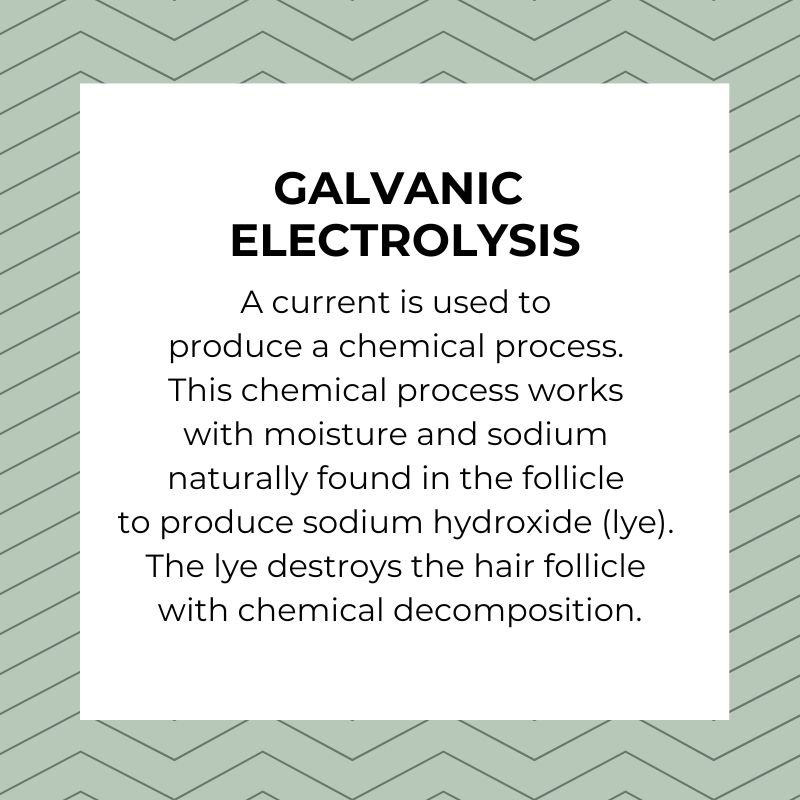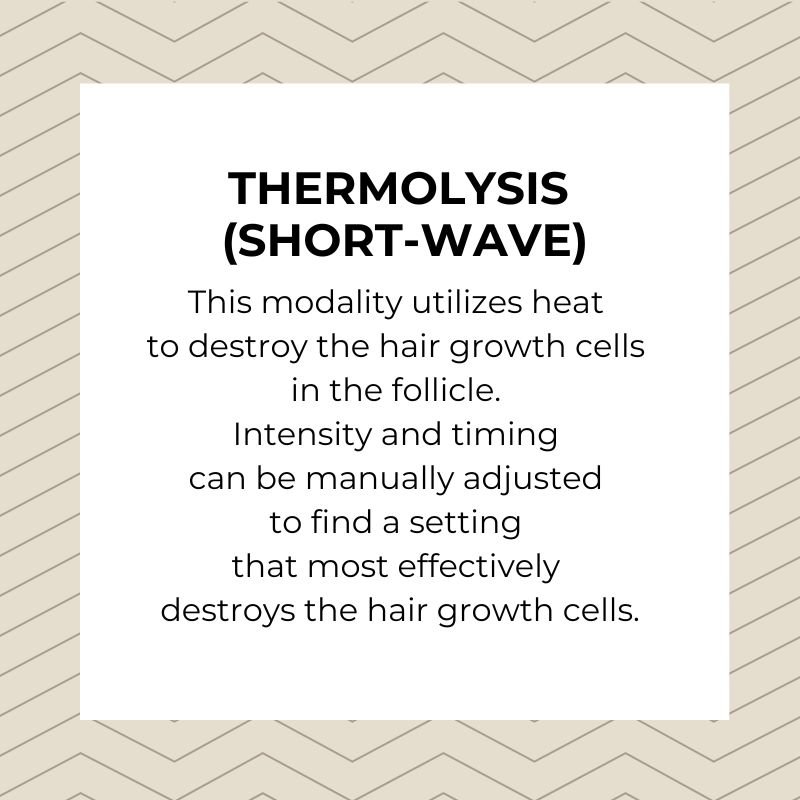What is Electrolysis?
Electrolysis safely and permanently removes all types of hair from all skin tones including black, brown, white, gray, red and blond hair.
Utilizing one of three modalities it permanently destroys the growth cells of the hair follicle preventing the treated follicle from regrowing hair.
Electrolysis is the only permanent method of hair removal and is approved by the FDA and AMA.
Excess hair growth can be caused by heredity, stress, hormonal changes, underlying medical conditions and certain medications.
Regardless of the cause of your hair growth, electrolysis is a safe, effective and permanent solution.
Electrolysis is not a new technology
It’s been around since 1875 when Dr. Charles E. Michel, an ophthalmologist, first used electrolysis for the removal of ingrown eyelashes. He was also the first to encourage its use in removing unwanted hair from other body parts.
While the basic premise of electrolysis remains the same the technology, equipment and training of electrologists has drastically modified the process.

The Process
The process of electrolysis involves inserting a pre-packaged, disposable, sterile probe into the natural opening of the hair follicle.
Current is applied using one three electrolysis modalities. After treating the hair, it is removed with tweezers. The goal is to remove the hair as smoothly as possible with little to no resistance.
Does it hurt?
There will be a little discomfort. Most people describe the feeling as a heat sensation, a pinch or sting.
The amount of discomfort you feel will depend on individual pain tolerance, the sensitivity of the body part being treated and the settings being used.
Based on a personal and confidential consultation, your electrologist will design a treatment plan that addresses your specific hair removal needs.

Electrolysis Modalities
Modern medical electrolysis devices destroy the hair growth cells with chemical energy, heat energy or both.
The method chosen by the electrologist is the modality.
All are effective and deliver permanent results.
The three modalities in current use are:

How many treatments will I need?
Electrolysis is a process over time.
Most clients can expect to be completed or nearly completed within 18-24 months if they are following the recommended treatment plan. This all depends on how much hair you have, the structure of the hair, previous hair removal methods, hair growth cycles, hormonal factors and medications.
The more dense your hair is (amount per square inch), the longer it will take to remove it all. In addition to hair density, hair structure ranges from fine vellus hair to dark, coarse hair on the face and body. Dark, coarse, deep hair often requires more than one treatment to break down the hair growth cells.
Initially, appointments start out longer and more frequent. Over time, as hair is eliminated, appointments are shorter and less frequent.
Hair permanently destroyed with electrolysis will not regrow. However, there is always a possibility that previously dormant follicles may be stimulated to begin growing hair due to a number of factors including hormonal changes caused by pregnancy and menopause, medications and excess stress to name a few. This means you may need touch up appointments over time.

about Hair Cycles
Hair is in a constant process of growth, transition and rest.
Hair growth occurs in phases and at different rates based on the area of the body. Not all hairs are in the same phase at the same time. This is why it takes repeated visits to clear an entire area.
Hair is going to be one of three stages of growth:
Growth Phase
Hair is connected to the blood supply in this period of active growth. Hair is at its greatest depth at this stage and thus in the most ideal phase for electrolysis treatment. It is important to maintain regular appointments so that we can treat hair in this stage before it begins to separate from the blood supply.
Transition Phase
The hair is separating from the blood supply and no longer growing in this stage. Hair treated in this stage will be damaged with electrolysis, but will probably regrow as a weaker, finer hair. Regular appointments will keep these damaged hairs from repairing themselves.
Resting Phase
The hair rests in the follicle, disconnected from the blood supply, until it is pushed out by the growth of a new hair. Hair treated in this stage will be damaged with electrolysis, but will regrow. Regular appointments will keep these damaged hairs from repairing themselves.
about Hormones
Hormones are the primary cause of hair growth in both men and women.
The two types of hormones responsible for hair growth are androgens or male hormones including testosterone and estrogen or female hormones including progesterone. Male hormones can accelerate hair growth and female hormones can slow down hair growth.
Men and women produce both types of hormones in different quantities throughout life. In addition, women experience a number of normal life events including puberty, pregnancy and menopause that can trigger increased hormone production or hormone sensitivity.
Hormone changes can also be caused by medications, underlying conditions such as Polycystic Ovarian Syndrome (PCOS), obesity and heredity. These shifts in hormone production can result in a number of symptoms including increased male pattern hair growth called Hirsutism.
Hirsutism can be difficult for a woman, both physically and psychologically. If you suspect you suffer from a hormonal imbalance, you may want to see an endocrinologist for proper diagnosis and treatment of the underlying problem.
For the hair, the solution is electrolysis!









